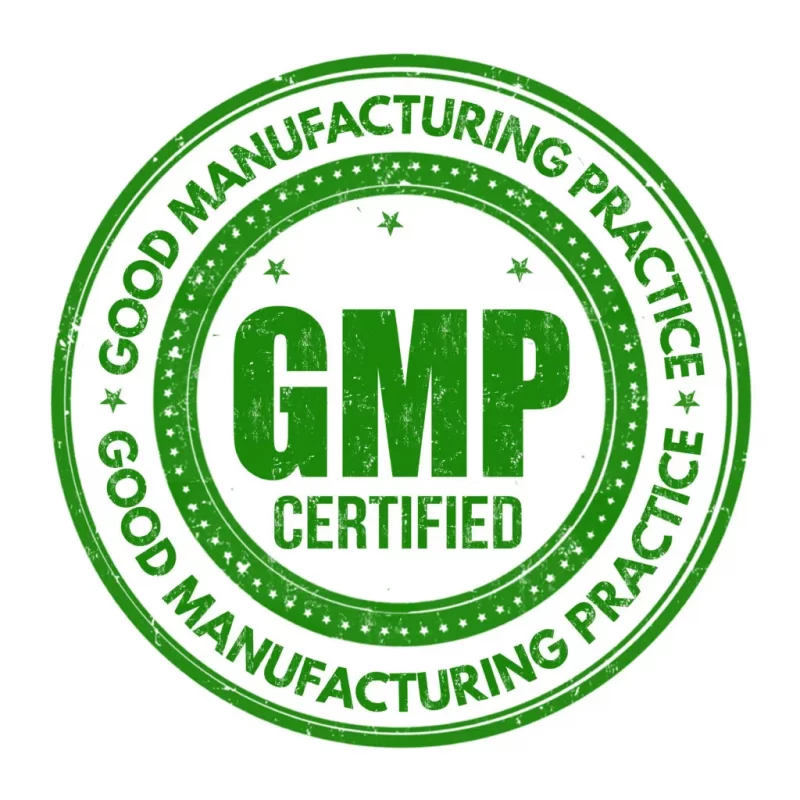GMP Certification, Uncategorized
GMP certification
Current Good manufacturing practices (cGMP) are those conforming to the guidelines recommended by relevant agencies. Those agencies control the authorization and licensing of the manufacture and sale of food and beverages, cosmetics, pharmaceutical products, dietary supplements, and medical devices. These guidelines provide minimum requirements that a manufacturer must meet to assure that their products are consistently high in quality, from batch to batch, for their intended use. The rules that govern each industry may differ significantly; however, the main purpose of GMP is always to prevent harm from occurring to the end user. Additional tenets include ensuring the end product is free from contamination, that it is consistent in its manufacture, that its manufacture has been well documented, that personnel are well trained, and that the product has been checked for quality more than just at the end phase. GMP is typically ensured through the effective use of a quality management system (QMS).: ”The Basis for GMP”,
Good manufacturing practices, along with good agricultural practices, good laboratory practices and good clinical practices, are overseen by regulatory agencies in the United Kingdom, United States, Canada, Europe, China, India and other countries

High-level details
Good manufacturing practice guidelines provide guidance for manufacturing, testing, and quality assurance in order to ensure that a manufactured product is safe for human consumption or use. Many countries have legislated that manufacturers follow GMP procedures and create their own GMP guidelines that correspond with their legislation.
All guideline follows a few basic principles:
- Manufacturing facilities must maintain a clean and hygienic manufacturing area.
- Manufacturing facilities must maintain controlled environmental conditions in order to prevent cross-contamination from adulterants and allergens that may render the product unsafe for human consumption or use.
- Manufacturing processes must be clearly defined and controlled. All critical processes are validated to ensure consistency and compliance with specifications.
- Manufacturing processes must be controlled, and any changes to the process must be evaluated. Changes that affect the quality of the drug are validated as necessary.
- Instructions and procedures must be written in clear and unambiguous language using good documentation practices.
- Operators must be trained to carry out and document procedures.
- Records must be made, manually or electronically, during manufacture that demonstrate that all the steps required by the defined procedures and instructions were in fact taken and that the quantity and quality of the food or drug was as expected. Deviations must be investigated and documented.
- Records of manufacture (including distribution) that enable the complete history of a batch to be traced must be retained in a comprehensible and accessible form.
- Any distribution of products must minimize any risk to their quality.
- A system must be in place for recalling any batch from sale or supply.
- Complaints about marketed products must be examined, the causes of quality defects must be investigated, and appropriate measures must be taken with respect to the defective products and to prevent recurrence.
Good manufacturing practices are recommended with the goal of safeguarding the health of consumers and patients as well as producing quality products. In the United States, a food or drug may be deemed “adulterated” if it has passed all of the specifications tests but is found to be manufactured in a facility or condition which violates or does not comply with current good manufacturing guideline.
GMP standards are not prescriptive instructions on how to manufacture products. They are a series of performance based requirements that must be met during manufacturing. When a company is setting up its quality program and manufacturing process, there may be many ways it can fulfill GMP requirements. It is the company’s responsibility to determine the most effective and efficient quality process that both meets business and regulatory needs.“Decision Makers’ Summary”,
Regulatory agencies have recently begun to look at more fundamental quality metrics of manufacturers than just compliance with basic GMP regulations. US-FDA has found that manufacturers who have implemented quality metrics programs gain a deeper insight into employee behaviors that impact product quality. In its Guidance for Industry “Data Integrity and Compliance With Drug CGMP” US-FDA states “it is the role of management with executive responsibility to create a quality culture where employees understand that data integrity is an organizational core value and employees are encouraged to identify and promptly report data integrity issues.” Australia’s Therapeutic Goods Administration has said that recent data integrity failures have raised questions about the role of quality culture in driving behaviors. In addition, non-governmental organizations such as the International Society for Pharmaceutical Engineering (ISPE) and the Parenteral Drug Association (PDA) have developed information and resources to help pharmaceutical companies better understand why quality culture is important and how to assess the current situation within a site or organization

